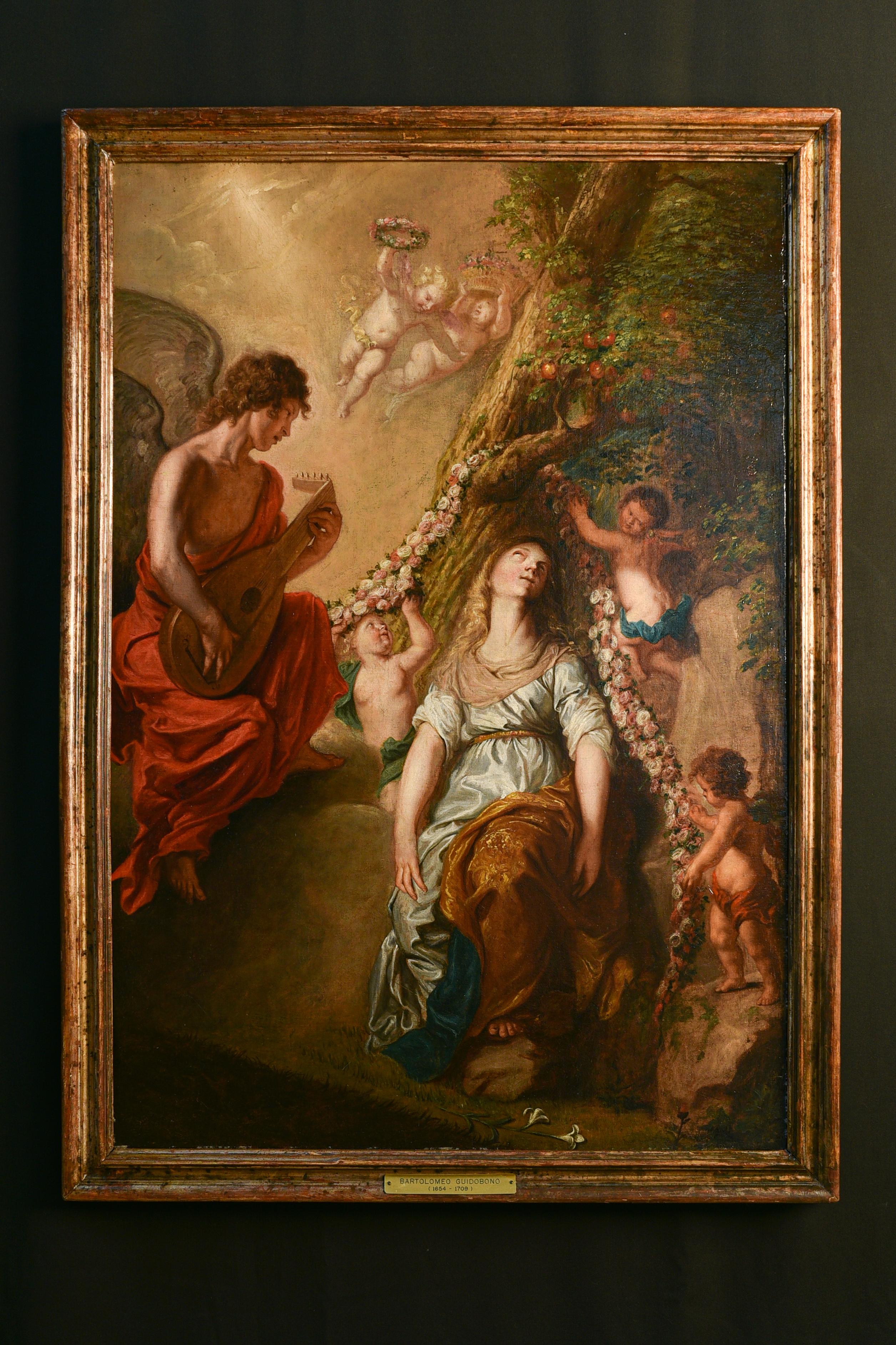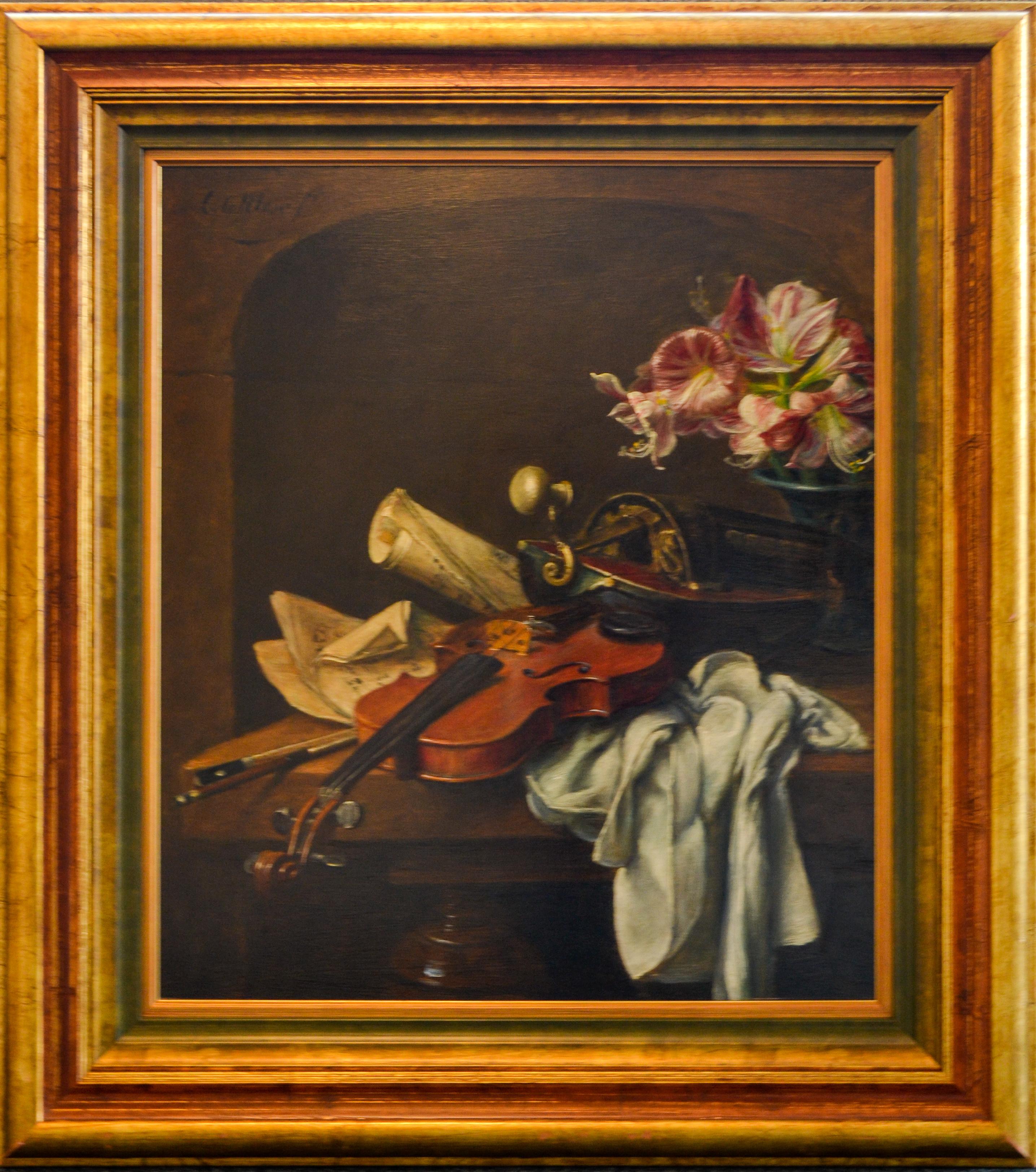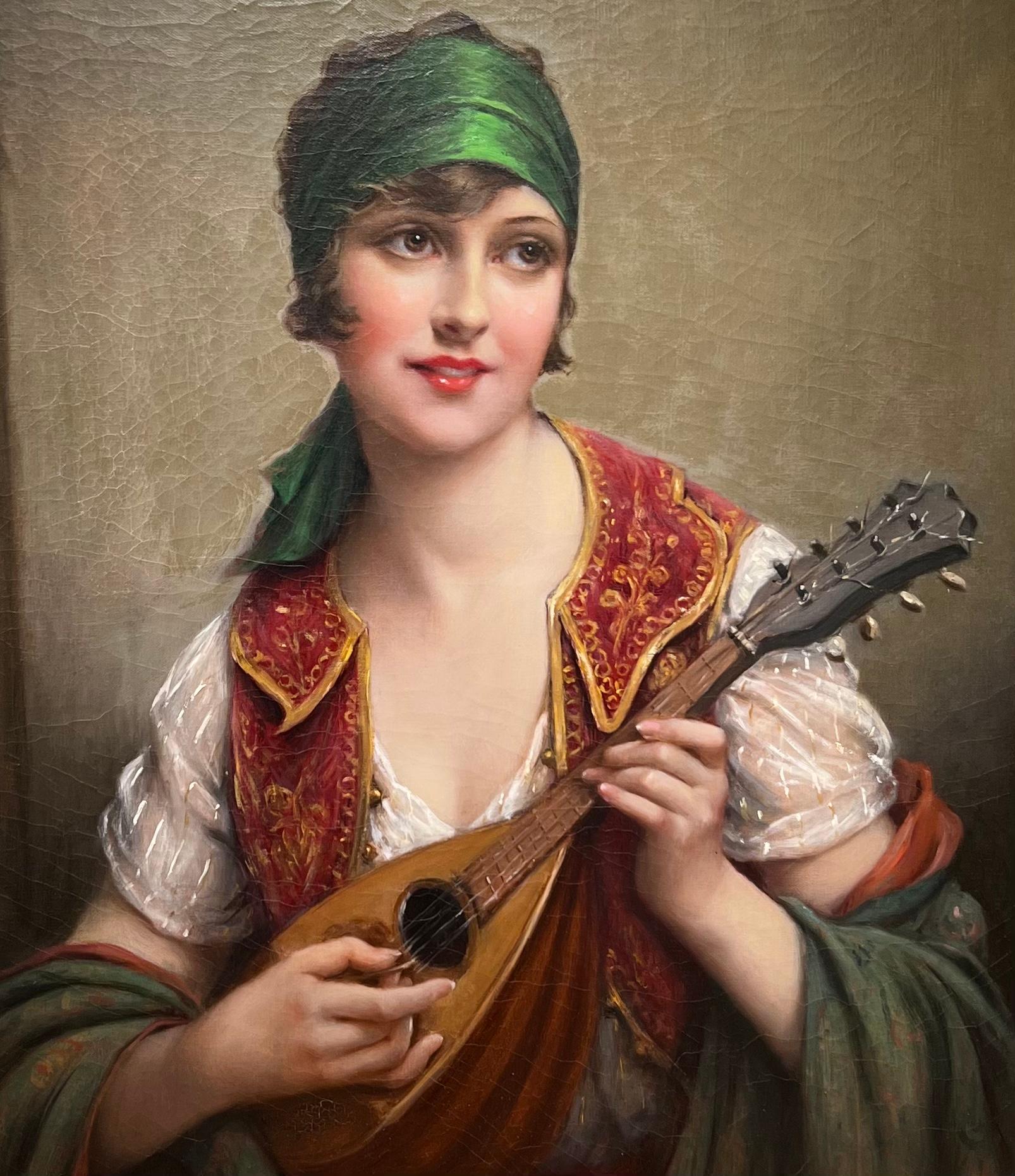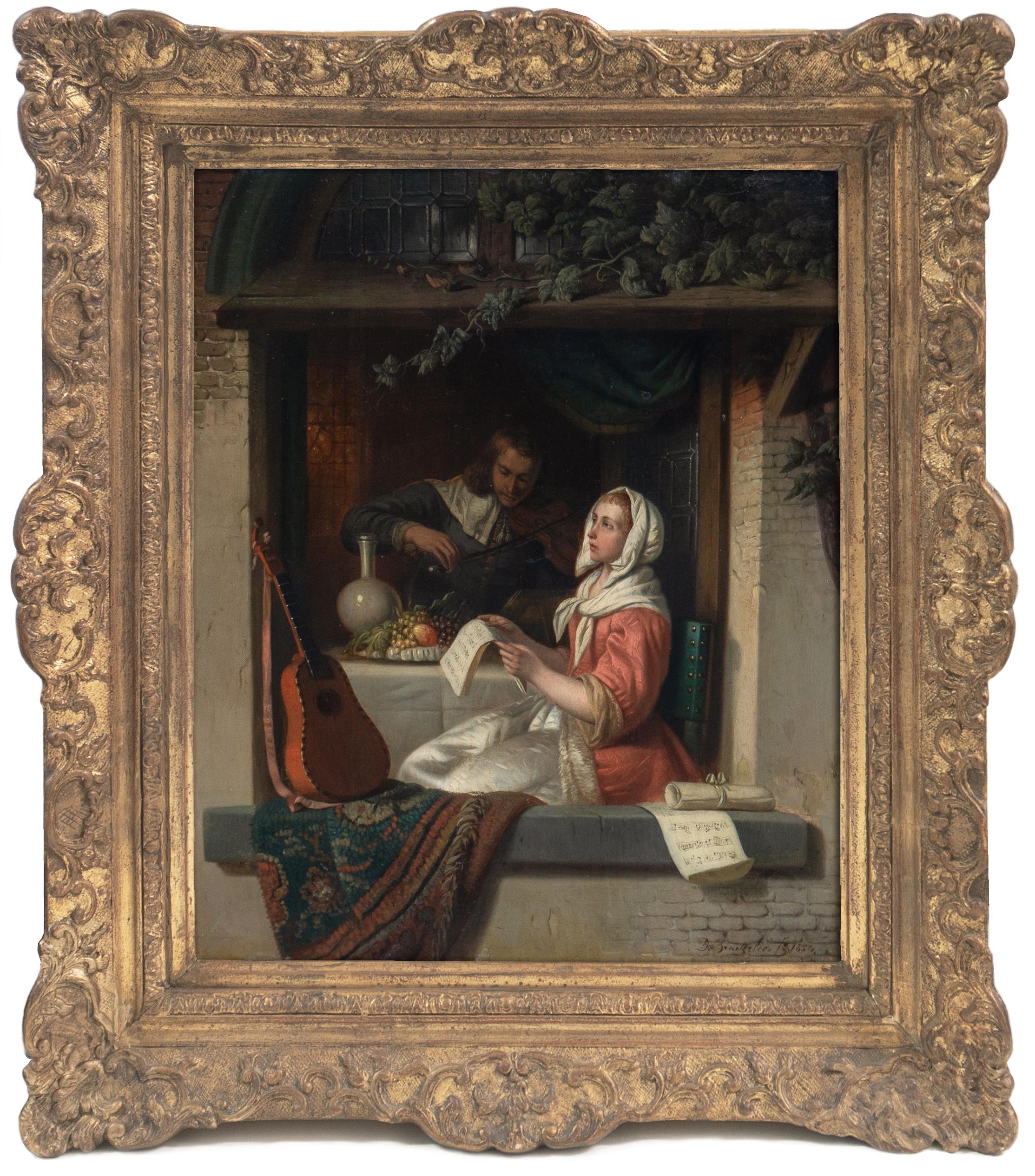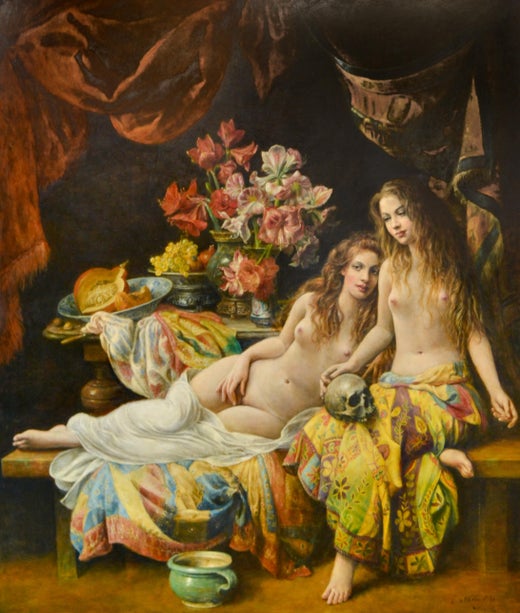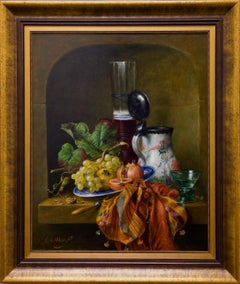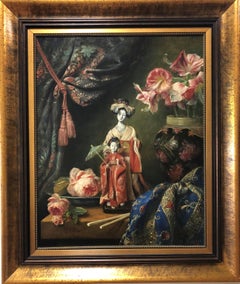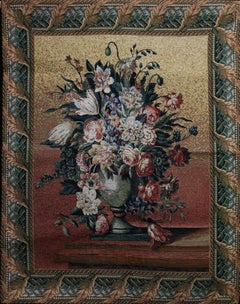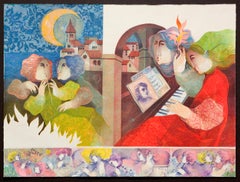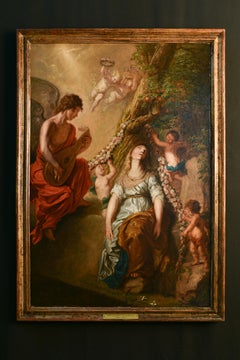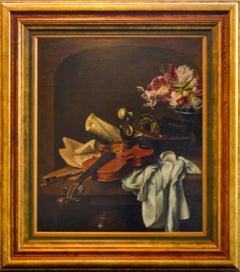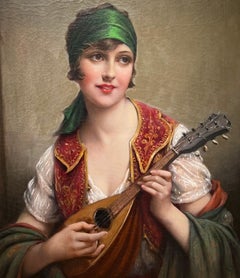Item is in excellent condition and has only been displayed in a gallery setting. This painting was procured direct from the artist's studio.
Cornelis le Mair is truly a renaissance man, encompassing all disciplines of the arts. He enjoys painting, drawing, writing, architecture, sculpture, and interior design.
Le Mair was born in Eindhoven, The Netherlands in 1944. He began drawing and painting at the young age of five and while in kindergarten, he was often made to show his paintings in other classes even though he was shy about doing so. “When I could not play outside because of bad weather, I would sit in my bedroom and would draw.” His early art studies were widely influenced by the Rembrandt exhibit in the Rijksmuseum (1956) that he attended with his father. There le Mair was inspired by the Old Masters and “the desire to unravel all the mysteries hidden under the cracked varnish” began.
Already having painted a lifesize copy of “The Nightwatch” on the wall of his bedroom, le Mair was continually driven by the Rembrandt exhibit. He began to experiment with resins, pigments and oils in order to hone and perfect the technique of the old masters. He studied drawings and paintings and early on developed the feeling of color and composition.
After completing high school, he worked for a short period as a designer of woven fabrics. Although his heart desired to paint, he enjoyed having a pencil and brush in hand and a case full of art books and says, “This treasure of inspiring information took me further on track to the traditional trade.”
At this same time, le Mair’s artistic endeavors led him to learn the art of music. First learning to play the guitar from friends, he began performing at youth centers. This love of music expanded into him learning to play the mandolin, turning lye, banjo, and bagpipes.
Just after his eighteenth birthday, le Mair was accepted into military service where his lack of conforming led him to a maximum solitary confinement sentence. After a month in training, the army physician and le Mair agreed that he was born to be an artist and released le Mair from military services.
Once he returned home, with the encouragement from his parents, le Mair began his art schooling at the Art Academy (Kustacademie) in ‘s-Hertogenbosch, The Netherlands. There he found that the school was geared for modernism and after painting a portrait of a fellow classmate, his teachers advised le Mair to look for a school where the traditional ideas were still taught. Longing to study the classical arts, he applied and was accepted to the Academy of Fine Arts (Koninklijke Kunstacademie) in Antwerp, Belgium in 1965. After studying under Professor Victor Dolphijn, le Mair graduated cum laude in portrait and figure paintings in 1968. He was then promoted to study as a student of the Higher Institute, a structure at a higher university level where he studied under Rik Slabbinck. After realizing that Slabbinck’s direction was hypermoderistic, le Mair left the Academy.
In 1970 he moved back to Eindhoven with his wife and child where he established himself as an independent painter, transforming his homes sunroom into his studio.
The discovery of the Pre-Rahaelites inspired le Mair to create life-sized paintings and around 1980 he began working on an idea to create a large format triptych. In the spring of 1982 le Mair began his nine-year composition of his large triptych entitled “The Allegory of the Transitoriness of Beauty” (“Allegorie van de Vergankelijheid”). The “Vanity Triptych”, according to le Mair, is “the largest and most ambitious work I have created”. Measuring 13.5 ft by 21 ft, the piece consists of three panels displaying the Three Graces of classical mythology, painted in oil on board and surrounded by a frame designed and handcrafted by le Mair. In the center of the piece, under the middle panel, sits an equally ornate, hand-built musical instrument. After its completion, the triptych was shown in its finished state in the Museum Kempenland in Eindhoven (1995), the Castle of Zeist (1997), and in the Westfries Museum (1999). The piece was appraised at $2,500,000 in 1992.
In 2001, his novel “Vanitas” hit bookstores after 15 years of creation and in 2008 his illustrated book of short essays “The Noble Trade” was published.
In 2003 le Mair completed his architectural project known as the “Vanitas Fantasy Castle”. Scaled at 1:25, this 8ft by 8ft model is an intricately elaborated architectural sculpture. The castle is designed as a multistory complex including a variety of towers, bridges, and balconies reminiscent of both oriental and baroque styles. The model was first displayed at the Kempenland Museum immediately after its completion.
Cornelis le Mair works in the best of three traditions – the Renaissance, the Romantic, and the Modern. His paintings are inspired by the artistic elements, composition, working light and shadow, and body positions seen in those of the Old Masters, but at the same time have their own identity through his use of wider brushstrokes.
When creating these classically inspired pieces, le Mair uses a semi-transparent painting technique in which he does not mix his colors while they are wet. Instead he adds transparent layers of colors – darkest to lightest – in order to create the beauty and depth in each piece. He begins by applying white gesso to his surface. Le Mair then applies a brownish gray primer to even the tone of his background. After his primer has dried he draws his outline with a thin brush and acrylic paint. He then creates the under painting in order to distinguish shadows and highlights in the piece. After all of the preparation work is complete, le Mair then begins to paint, with oils, his transparent layers of colors onto his surface. After all layers are dry, the painting is finished with a varnish for protection.
His pieces are created with a feeling of form, color, nuance, drama, distinction, relationships, balance, effect, and stability and convey a certain expression of timelessness.
This unique individual is a true artist. Art is his life and the art he produces is the result of what he feels a passion for, rather than driven by economic motives. Among his favorite subjects are portraits, female figures and still lifes.
Though much has been publicized about le Mair and his exceptional art and environment, he prefers to shun publicity. Nevertheless, le Mair has caught the attention of publications such as Architectural Digest, Colonial Homes, European television and numerous other magazines and newspapers. In the summer of 2009, the Discovery Channel spent an entire day filming le Mair, his art, his home and his environment, which will be aired in the coming months.
In 2004, he was named one of the 10 most influential people in Eindhoven over the past four decades, side by side with the city’s former mayor and the company founder of Philips Electronics. Adding to this recognition, a Dutch tourist commission has underwritten the publishing of a 200-page book, slated to release in 2010, on the life and art of Cornelis le Mair to recognize his accomplishments as a contemporary artist.
Le Mair prefers to avoid the commercial aspect of his art. Most of his work is commissioned, and upon completion, many paintings disappear behind the doors of collectors – among them wealthy aristocrats in Europe and other parts of the world that are both lucky and influential enough to get the attention and the commitment of this exceptional artist. Had he chosen to place his works with more galleries worldwide, he would probably be one of the most widely known and prestigious living masters today.
CAREER SYNOPSIS:
Born in Eindhoven, The Netherlands in 1944.
Began drawing and painting at the age of five.
At 12, he visited a Rembrandt exhibit at the Rijksmuseum where his influence of the old masters began.
While in high school, his artistic endeavors lead him to teach himself to play the guitar, mandolin, turning lye, banjo and bagpipes.
Just after his eighteenth birthday, le Mair was accepted into military service where, after a month in training, the army physician and le Mair agreed that he was born to be an artist and released le Mair from military services.
At 18, he began his art schooling at the Art Academy (Kustacademie) in Hertogegnbosh, The Netherlands.
In 1965 he applied and was accepted to the Academy of Fine Arts (Koninklijke Kustacademie) in Antwerp, Belgium where he graduated cum laude in portrait and figure paintings in 1968. After graduation he was promoted to study as a student of the Higher Institute.
In 1970 he returned to Eindhoven where he established himself as an independent painter.
In the spring of 1982 le Mair began his nine-year composition, The Allegory of the Transitoriness of Beauty, also known as the Vanity Triptych). This piece was appraised for $2.5 million in 1992.
In 1994 – 1995, the Museum Kempenland in Eindhoven held an exhibition of his works.
In 1997 – 1998, the Castle of Zeist in Zeist held an exhibition of his works.
In 2001, his novel Vanitas hit bookstores after 15 years of creation.
In 2002 he was knighted by Queen Beatrix of The Netherlands for his accomplishments as a fine art painter.
In 2003, he completed his architectural project known as the Vanitas Fantasy Castle. The model was first displayed at the Kempenland Museum immediately after its completion.
In 2007, the Castle of Geldrop held an exhibition of his works.
In 2008, his second book The Noble Trade was published.
